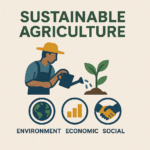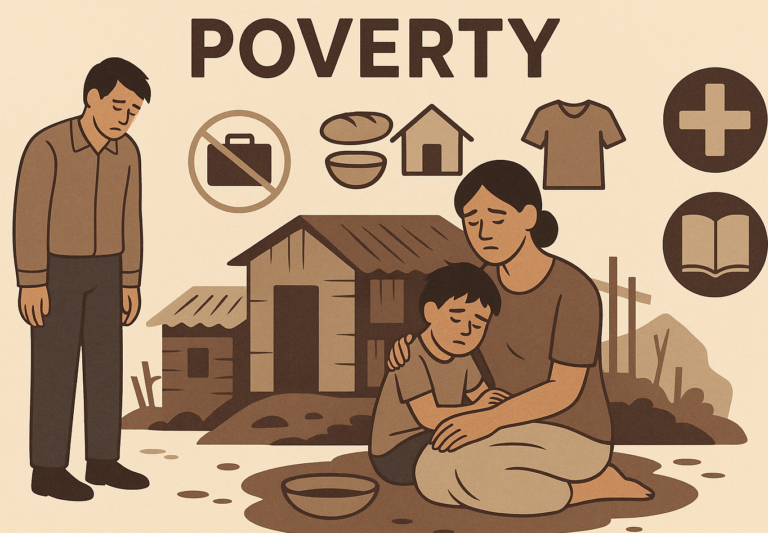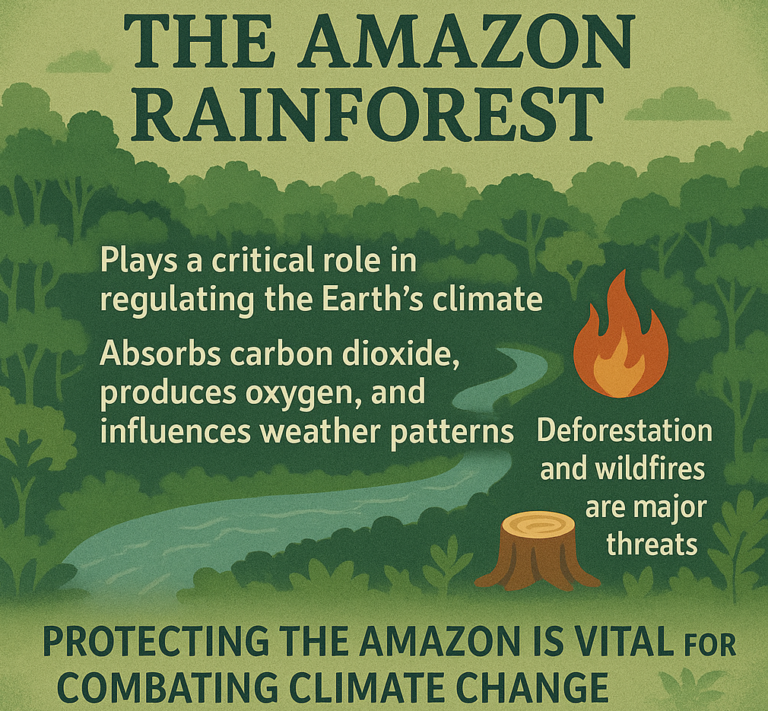Water Scarcity and Its Impact on Global Agriculture
Water scarcity means there is not enough fresh water to meet the needs of people, animals, and plants. It’s a growing problem in many parts of the world and can have a huge impact on agriculture, which relies heavily on water for growing crops and raising livestock. Here’s a simple explanation of how water scarcity affects global agriculture:

1. What is Water Scarcity?
- Water scarcity happens when there is not enough clean water for daily use, or when water supplies are too polluted or difficult to access. It can be caused by natural factors, like drought, or human actions, such as overuse of water resources, pollution, or climate change.
- It affects both quantity and quality of water: In areas with water scarcity, there might not be enough water to irrigate crops or water livestock, or the water that’s available may be too polluted to use.
2. Agriculture’s Dependence on Water
- Water is essential for crops: Plants need water to grow. It helps them absorb nutrients from the soil, stay hydrated, and carry out vital processes like photosynthesis (making food). Without enough water, crops can’t grow properly.
- Water is essential for livestock: Animals, such as cows, sheep, and poultry, also need water to drink, stay healthy, and grow. Without enough water, livestock can get sick, produce less milk or meat, or even die.
- Irrigation: In many parts of the world, farmers rely on irrigation (using water from rivers, lakes, or reservoirs) to water crops, especially in dry areas or during dry seasons. Irrigation systems help make sure crops get enough water even if it doesn’t rain enough.
3. Effects of Water Scarcity on Agriculture
- Crop failures: If there isn’t enough water, crops can wilt, dry out, and die. This leads to lower yields (less food being produced), which can cause food shortages.
- Reduced agricultural productivity: Even if crops survive, a lack of water can slow their growth and reduce their quality. For example, fruit may not ripen properly, or grains may not grow to their full size. This affects how much food is available and how much it costs.
- Livestock health problems: Animals need water to drink and to produce milk, eggs, and meat. If they don’t get enough water, they can become dehydrated, sick, and less productive. For example, a lack of water can reduce milk production in cows or weight gain in pigs.
- Soil degradation: When there is not enough water, the soil can become dry and cracked, which reduces its ability to support crops. Over time, this can lead to desertification (turning productive land into desert) and loss of farmland.
4. Economic Impact of Water Scarcity
- Increased food prices: When crops fail or livestock are affected by water scarcity, there’s less food available for people. This can lead to higher prices for food, making it harder for people to afford what they need.
- Loss of income for farmers: Farmers rely on crops and livestock for their livelihood. If they can’t grow enough food or raise enough animals due to water scarcity, they lose income. This can affect not just farmers, but the entire economy of a country, especially in regions where agriculture is a major industry.
- Job loss: Agriculture provides jobs for millions of people worldwide. If farms don’t have enough water, they may need to cut down on workers or close altogether, leading to job losses and economic hardship.
5. Regions Most Affected by Water Scarcity
- Arid and semi-arid areas: These are naturally dry regions where water is already in short supply, like parts of Africa, the Middle East, and Asia. In these areas, agriculture is heavily dependent on irrigation, and water scarcity can lead to widespread crop failures and economic struggles.
- Countries with growing populations: As the world’s population grows, more people need food and water. This can put more pressure on existing water resources, especially in areas already facing water shortages. Countries like India and China, with large populations and rapid urbanization, are feeling the strain.
6. Climate Change and Water Scarcity
- Droughts and unpredictable rainfall: Climate change is making weather patterns more unpredictable, leading to longer and more severe droughts in some areas. In other areas, heavy rainfall and flooding can damage crops. Both situations are caused by the changing climate and make water scarcity worse.
- Melting glaciers and reduced river flow: In some parts of the world, glaciers and snowpacks (which provide water during dry months) are melting faster due to rising temperatures. This reduces the amount of water available for agriculture in the future.
7. Solutions to Address Water Scarcity in Agriculture
- Efficient water use: Farmers can use water more efficiently by implementing better irrigation systems, such as drip irrigation, which delivers water directly to the plant roots, reducing waste. Technologies like soil moisture sensors can help farmers know exactly when and how much to water their crops.
- Rainwater harvesting: Collecting and storing rainwater for later use can provide an additional water source for farmers, especially in areas with irregular rainfall.
- Drought-resistant crops: Scientists are developing crops that need less water to grow, such as drought-resistant varieties of wheat, rice, and corn. These crops can survive longer without water, making them more suitable for areas with water scarcity.
- Water conservation practices: Governments and farmers can work together to promote water conservation techniques, such as reducing water waste, recycling water, and improving water storage and management.
- Water pricing and management: In some areas, water is used inefficiently or wasted. Governments can create policies to manage water resources better, such as regulating water use in agriculture and ensuring that water is distributed fairly.
8. The Future of Water and Agriculture
- Increased global cooperation: As water scarcity becomes a bigger issue, countries will need to work together to manage shared water resources, such as rivers and lakes that cross borders. International cooperation and agreements are needed to ensure everyone has access to clean water for agriculture and daily life.
- Technological innovation: Advances in technology, such as smart irrigation systems and genetically engineered crops, will help farmers use water more efficiently and reduce the impact of water scarcity on agriculture.
Conclusion:
Water scarcity is a growing global problem that directly impacts agriculture. Without enough water, crops and livestock suffer, which can lead to food shortages, economic loss, and even social unrest. To address this issue, we need to use water more efficiently, develop drought-resistant crops, and adopt new technologies to ensure that farming can continue sustainably in areas facing water scarcity. Protecting and managing water resources is essential to ensuring that future generations have enough food to eat.











